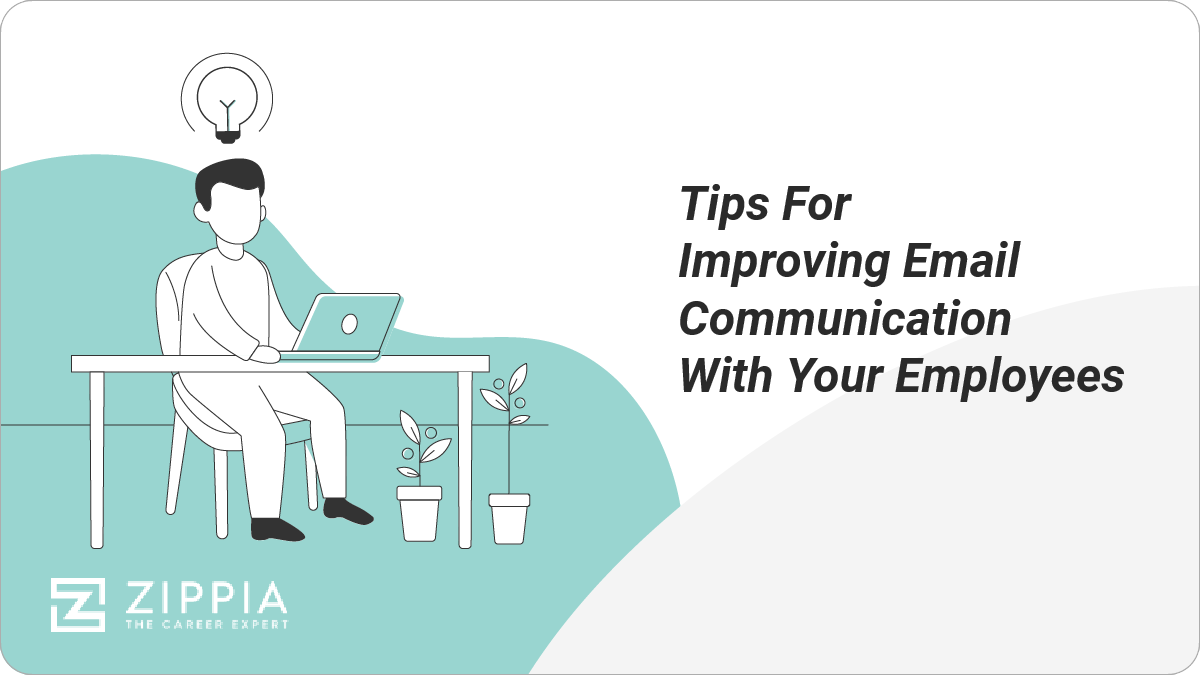While email can be a great tool for engaging with your employees and communicating relevant news and information, it’s all too easy for your staff to ignore company emails.
Sending too many internal emails or not paying enough attention to what you’re saying can turn employees off and disengage them. There are better ways to ensure that your emails actually accomplish what you want them to do.
Engagement starts by putting yourself in your employees’ shoes rather than seeing things from the company’s perspective.
It might surprise you, but the email communications you send are a great place to start to better engage your team. It’s one of many little things that can either make an employee feel valued and respected, while still accomplishing your goals.
Key Takeaways:
-
To write an effective email think ahead, be concise, informative, and clear in your goals.
-
There are two types of emails: request-and-reply and confirmation.
-
Tips to improve your emails with employees include being mindful of your tone and being specific in your subject line.
-
Avoid overwhelming your employees by sending emails only when necessary. Use other mediums of communication instead.

How To Write Effective Emails To Your Employees
To write an effective email:
-
Think ahead.
Writing effective emails begins with planning ahead. If you write without thinking, you put yourself at risk for causing miscommunication problems. As a leader, it is your responsibility to be proactive and consider your email writing carefully.
-
Be concise, but informative.
Be considerate of your reader’s time. Your employees are probably swamped with emails, and extra, unnecessary prose is going to make it harder for them to achieve the results your looking for.
-
Be clear in your goals.
If your email sets to achieve something, make it clear to the reader what exactly you are trying to achieve. You do not want them to guess or assume.
Types Of Emails In The Workplace
Generally speaking there are two types of emails in the workplace:
-
Request-and-Reply Emails.
As the name suggests, a request-and-reply email makes some kind of request and expects a reply. These are the most common type of emails in the workplace. They include emails related to:
-
Asking questions.
-
Asking for comments or acknowledgements on the subject of the email.
-
Specifying tasks to complete.
-
Scheduling.
You may find that as a supervisor, many of the emails you write will come with the expectation a reply. However, be prepared to reply to emails from others as well.
-
-
Confirmation Emails A confirmation email provides a written record for any topic discussed between you and someone else. A confirmation email keeps everyone in agreement to what took place.
For example, after a meeting you may send a confirmation email to your staff with bullet point that list off what was discussed and what action items need to be addressed going forward..
Breaking down your emails into these two types of categories can help you be more effective as you communicate with your staff. Consider what type of email you are writing, what you are trying to achieve, and how you expect the other person to react.
Tips For Improving Email Communication With Your Employees
-
Be mindful of your tone.
Consider how your words and even punctuation can be perceived by the recipient.
Email communications, because they’re not accompanied by your facial expressions, have to be interpreted. Make sure your words don’t come across as aggressive or rude.
If there’s any doubt about how your message could be taken, don’t send the email. Walk over to your employee and discuss it in person, or at the very least, call them.
-
Use your company email.
Stick to just your professional company email address for anything you send to your staff.
If you represent a department, use the department name so that people know who it’s coming from, like ‘Natrix HR’ or ‘Natrix Accounting.’
-
Send emails only when necessary.
Just because you can email your employees doesn’t mean you should do so more than necessary. Just like your child is able to tune you out the more you talk, your employees will also start to ignore your emails if you send them constantly.
Before sending an email, ask yourself: is email the best platform for this communication? Would it be better for me to walk over and talk to this person or call?
Emails are obviously necessary when you need to communicate with a large amount of people. However, in these cases, it is equally important to consider if your email is necessary. You should also consider exactly who needs to read the email.
-
Break out of the professional mold (when appropriate).
Your office probably isn’t stiff and professional all the time, so why should your emails be? Be personable in your communications, but keep it respectful.
-
Don’t be immature.
Don’t be too casual and turn into an emoji-generating, meme-sending social media spam bot.. There’s a fine line between appropriately casual and immature. Keep it professional.
-
Make the subject line specific.
Your subject line should tell the recipient what to expect when opening the email. Avoid vague lines like “Important” or “Can you help?”
The more specific you are, the quicker the response. A vague subject line could keep your email unopened in the inbox until the recipient has time to open it.
-
Consider whether email is necessary.
Email isn’t always the best option. If you are assigning tasks, you run the risk of your email getting lost. A project management tool may be a better solution to assign tasks to an employee.
If you just need a quick answer to a question, an interoffice messaging platform is great.
And of course you can always give a call or talk in person. Don’t rely on technology to the point that you get away from human interaction, because it is key to engaging your staff.
If you put just a little forethought into how you use email to reach your employees, you can get better results. Just keep in mind that your email should have a purpose, and never abuse the privilege.
- Workplace Communication
- Email Tips For Effective Leadership
- How To Improve Email Communication With Your Employees
- How To Prepare Managers To Communicate Change
- Congratulations Letter To Employee
- Appreciation Letter To Employee
- Employee Value Proposition
- Morale Booster Quotes
- Types Of Workplace Bias
- Team Exercises For The Workplace
- How To Write An Employer's Reference Letter (With Template + Sample)





